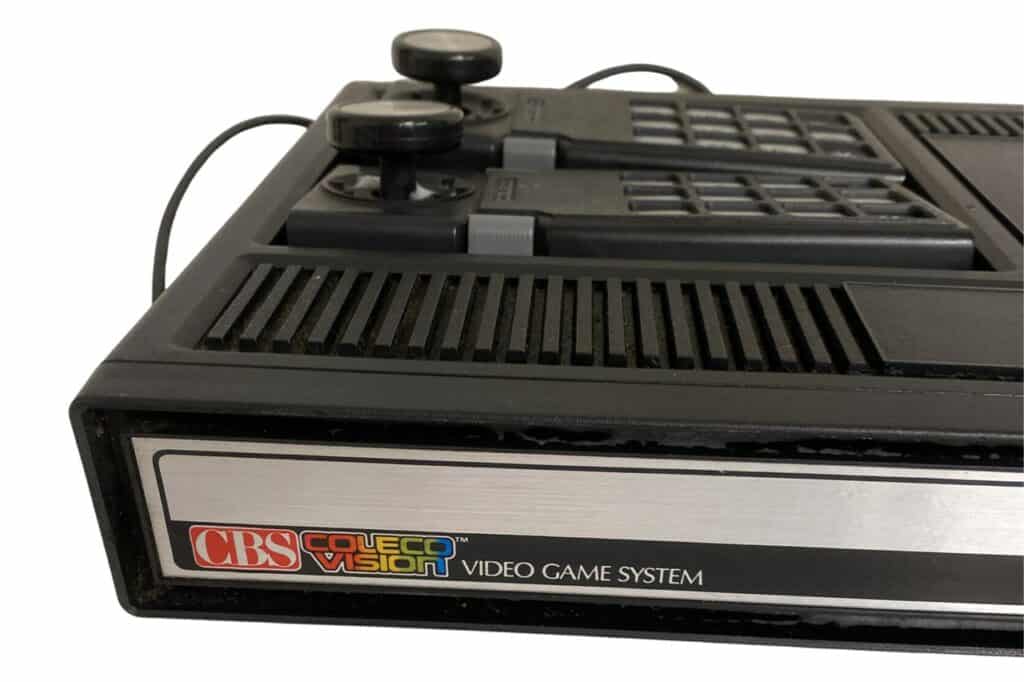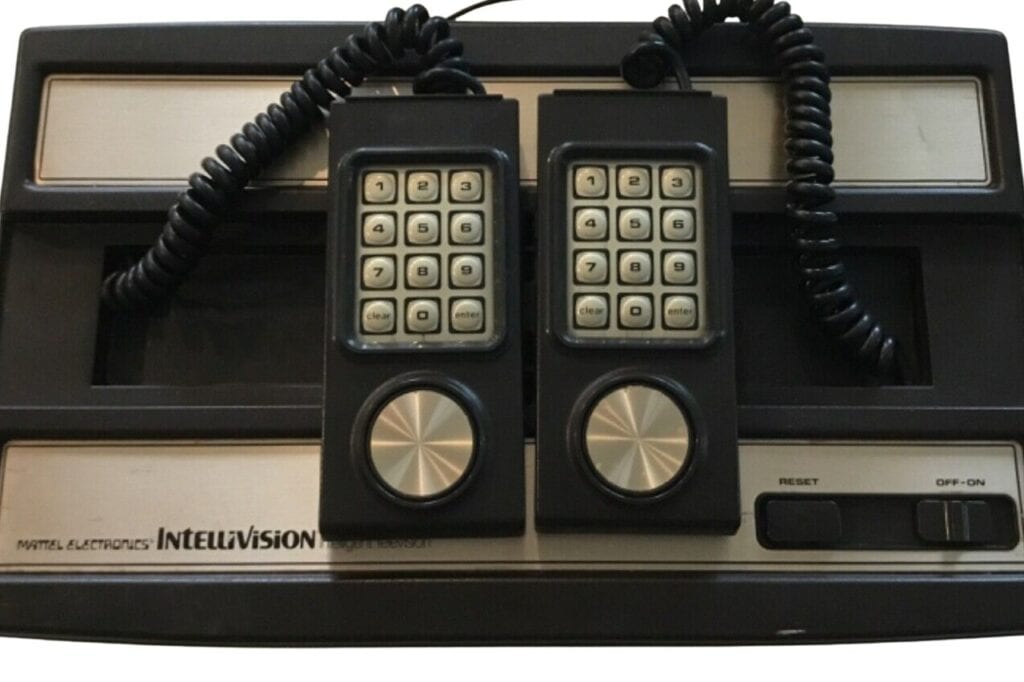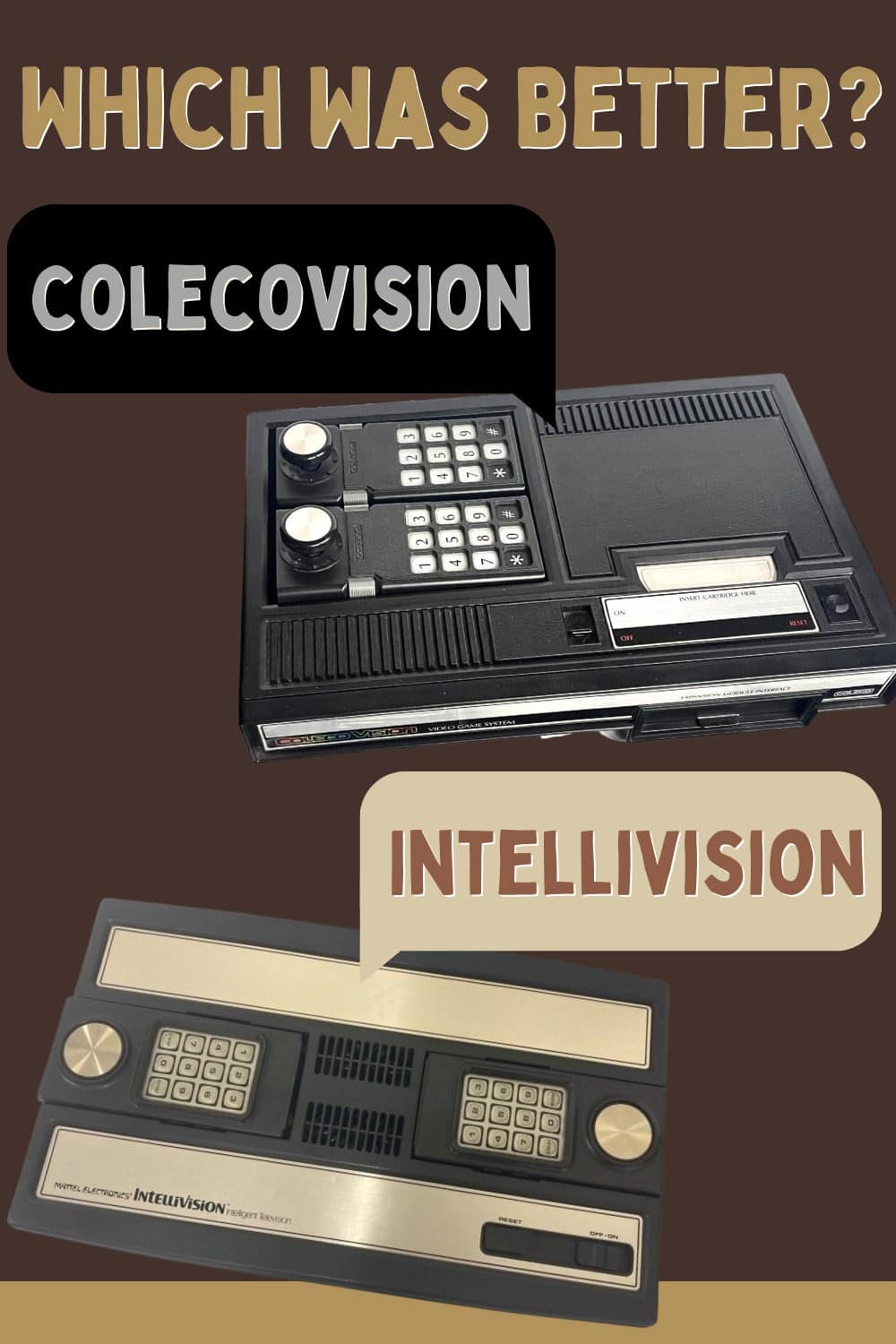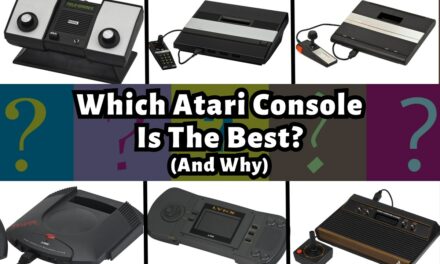The ColecoVision and the Intellivision were two home consoles that emerged during the golden age of video gaming.
Hoping to take some sales away from the popular Atari 2600, each looked to offer consumers a diverse range of options, while also marking a significant step forward in the evolution of gaming hardware. However, as the saying goes, no two consoles are created equal.
Join me now for a look at
What’s The Difference Between The ColecoVision And The Intellivision?
There are many differences between the ColecoVision and the Intellivision. Because it we released later, the Colecovision boasted better graphics, a game focused controller, and backward compatibility with Atari 2600 games, giving it many advantages over the Intellivision home console.
But that is not to say that the Intellivision didn’t put up a good fight. While many gamers flocked to the Colecovision, the Intellivision still had some good selling points and maintained a large audience of fans right up to its demise. Let’s take a deeper dive into each of these retro consoles.
An Overview Of The ColecoVision
Released in 1982 by Coleco, the ColecoVision was designed to be a direct competitor to the Atari 2600.

Featuring some impressive hardware for its time, the console came to bat with a robust Zilog 8-bit processor and a vibrant color pallet that allowed for more detailed and visually appealing games.
One of the biggest standouts for the system came in the form of the aptly named ColecoVision Expansion Module #1, a peripheral that actually allowed players to play games from the 2600 library. This first of its kind feature gave the ColecoVision a distinct advantage over the competition as players could access a wide variety of games all on a single video game console.
An Overview Of The Intellivision
The Intellivision, developed by Mattel Electronics and released in 1979, focused on giving players a much more sophisticated gaming experience.

It featured a futuristic CP1600 16-bit processor, a significant leap in power compared to the competition.
The Intellivision also introduced a rather unique and innovative controller that featured a numeric keypad. This allowed for more precise input and expanded gameplay. A far more appealing design than the traditional joystick setup that was common at the time, these controllers further set the Intellivision apart from its contemporaries.
Sound And Graphics
Graphics and sound capabilities would also go a long way in distinguishing the two consoles.
Packing a variant of the Texas Instruments TMS9918 video chip, it was the hardware behind the ColecoVision that allowed for better graphics and sound over the Intellivision. This made the console a preferred choice for gamers looking to get the most out of the audio and visual department.
The Intellivision, with its Standard Television Interface Chip, was not particularly visually impressive. That said, Mattel’s machine did excel in offering consumers a far more immersive gaming session, this thanks in no small part to its far superior processing power coupled with an innovative controller that was second to none.
What About The Games?
One of the most significant differences between these two consoles was their gaming libraries.
While both featured many exclusive titles, Mattel’s Intellivision was known for its emphasis on strategy and sports games like Boxing, Slap Shot Space Spartans, and Sub Hunt.
Certain titles, like Major League Baseball and fan-favorite Utopia, were even designed to showcase the console’s ability to deliver a more complex and realistic gaming experience than that of its underpowered rival.
The ColecoVision instead looked to focus on arcade-style games and featured a strong lineup of ports that ranged from BurgerTime to Zaxxon. Other popular titles to find a home on the Coleco console included Centipede, Congo Bongo, Defender, Donkey Kong, Pitfall, and Spy Hunter – all of which were known for their impressive graphics and praised by critics and fans alike for being faithful recreations of their arcade counterparts.
Retail Rumble
Another notable difference between these two consoles was the marketing strategies employed by both Coleco and Mattel.
As was mentioned earlier, Coleco marketed their device as a direct competitor to the Atari 2600, emphasizing both the console’s superior graphics and its ability to play 2600 games with the aid of the expansion module. This helped Coleco gain a rather strong foothold within the market, attracting gamers who were already familiar with the impressive range of titles available on the Atari.
By the end of its first year, 500,000 ColecoVision consoles had flown from store shelves, something many experts attribute to the added strength of including Donkey Kong as the bundled game.
On the other hand, Mattel brought the Intellivision to market as a premium gaming system that offered a far more grown-up gaming experience.
They flaunted the system’s increased processing power, unique controller design, and focus on the popular sports and strategy genres. This positioned the Intellivision as a console for more mature gamers hungry for deeper and more immersive play.
End Of An Era
In terms of overall popularity, both the ColecoVision and the Intellivision enjoyed some time in the limelight.
While the Coleco console enjoyed strong initial sales thanks to its compatibility with Atari’s 2600 game library, the Intellivision capitalized on a different niche made up of older, more adult gamers who appreciated the console’s advanced computing power and futuristic design.
Come 1984, the ColecoVision had sold over 2 million units, while the Intellivision is said to have moved close to 5 million consoles by 1990. In addition, the hottest-selling Intellivision game, Las Vegas Poker & Black Jack, is said to have sold close to 2 million units all on its own!
Sadly, the North American video game market crash of 1983 led to a dramatic decline in sales that eventually resulted in the discontinuation of both consoles.
However, in just a few short years, the gaming industry would once again be reborn. With Nintendo leading the charge, and SEGA not too far behind, video games would soon make their triumphant return – bigger and better than ever before.
And, while neither the ColecoVision nor the Intellivision were able to successfully withstand the passage of time, both have left indelible marks on the industry.
In conclusion, there are some notable differences between the ColecoVision and the Intellivision. While the ColecoVision stood out for its impressive graphics, compatibility with Atari 2600 games and faithful ports of popular arcade titles, the Intellivision offered a more sophisticated gaming session thanks to its advanced hardware and more adult-skewed games.
While both may be long gone now, these distinct gaming greats will forever be fondly remembered by retro gaming enthusiasts as important milestones in the history of video games.
Last update on 2024-04-28 at 12:06 / Affiliate links / Images from Amazon Product Advertising API












